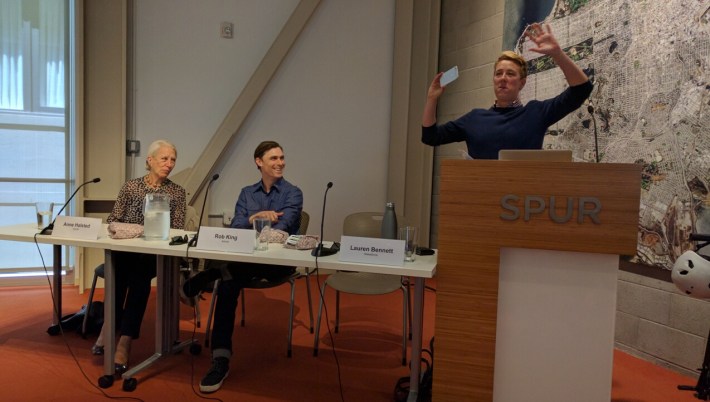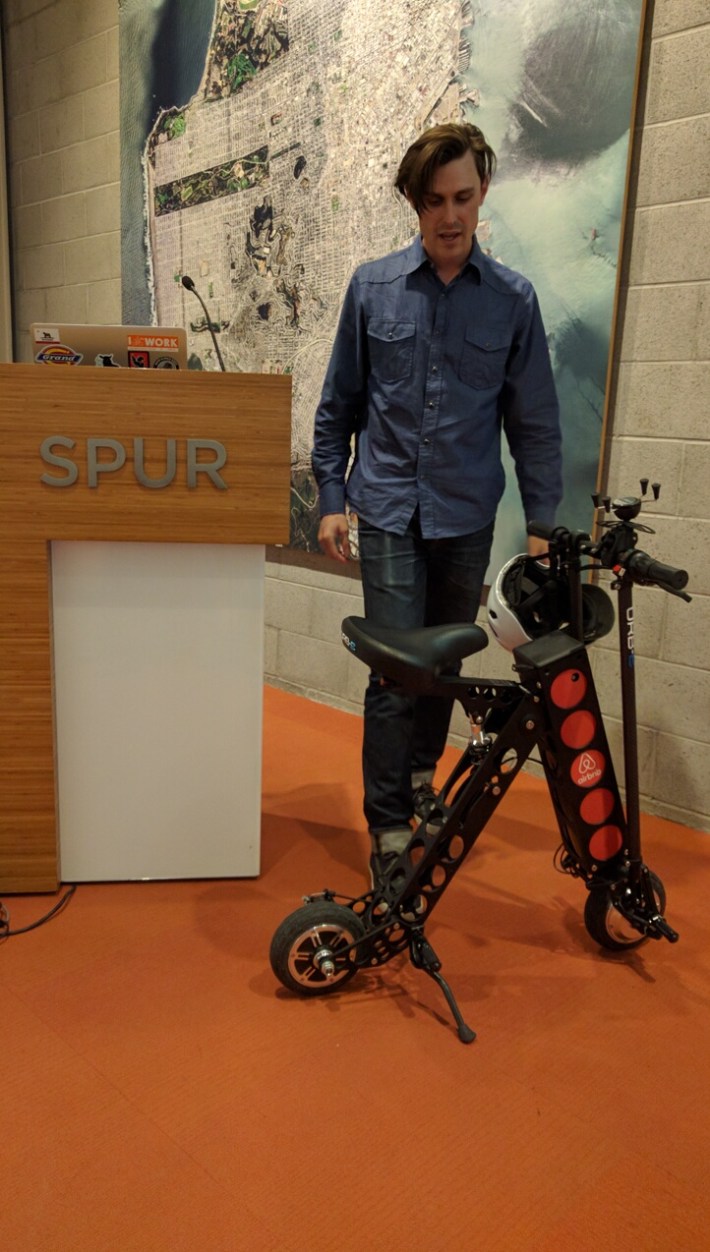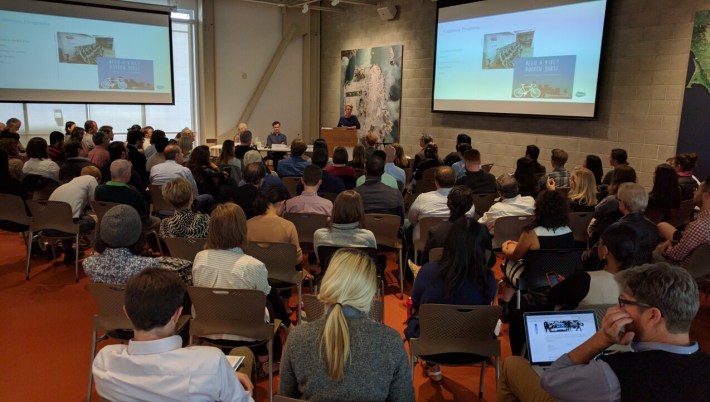
The San Francisco Bay Area Planning and Urban Research Association (SPUR), hosted a lunchtime talk in downtown San Francisco today, with representatives from Salesforce and Airbnb, about how the companies help employees commute between work and home. Unlike tech giants based outside of downtown San Francisco, neither company makes heavy use of private buses--so-called Tech Shuttles--and instead depends on public transit such as BART, buses and Caltrain.
"Our San Francisco campus is right down the street," said Lauren Bennett, Senior Program Manager for Transportation at Salesforce. Her company has seven buildings in downtown San Francisco with nearly 7,000 employees, she explained, adding "That gives us access to two BART stations and the regional Transbay Terminal...we don’t have a last-mile problem."
That's probably why a third of its employees get to work by BART, with another 20 percent getting in by various bus and other transit providers. That's part of a corporate strategy. "We think our employees want to work in urban areas and like the city as an amenity," she said. And they don't try to insulate their employees from the surrounding area. "We don’t have a cafeteria. We want people to get out, walk around and spend money in small businesses," she said.
Airbnb has a similar strategy. "Airbnb was born and bred South of Market," said Rob King, Facilities Coordinator at Airbnb. "It was started with air mattresses on the floor in SoMa; we've always been an urban company right in the heart of cities." But the SoMa location comes with its own last-mile challenges. "The Caltrain station and BART are both .8 miles away," said King, "Transbay is 2 miles and it's 2.5 for the Ferry Terminal."
To solve this, Airbnb encourages employees to use bikes to and from the hubs. "We have 175 spots in a bike cage and it’s swamped!" he said. "We have an additional 200 spots in the works." But bike parking carries its own challenges, explained King, a professed bike addict who thinks nothing of taking 80-mile rides. He said it's a challenge to make sure the bike parking spaces are used by employees who actually use the bikes. "We have to make sure bikes aren’t just parked and living in the cage."
Then there's the issue of comfort; King reports that many employees would like to bike, but don't feel safe in traffic. For that, they work with the San Francisco Bicycle Coalition to introduce novices to cycling. They are also working on alternate solutions, such as shuttles to the transit hubs. They work with Lyft to provide discounted services to the stations. They're also trying out electric scooters, for example, such as the URB-E, which he brought to the presentation. "It's a company in Pasadena which sent me a little electric scooter to try for our last-mile program," he said, while demonstrating how it folds up.

Meanwhile, 27.4 percent of Airbnb's SF employees commute by public transit as a primary means, according to a company survey. For both companies, locating in downtown avoids some of the contentious issues faced by other tech giants, such as Apple, Facebook and Google, with insular, campus headquarters based in suburban areas. But it doesn't solve all transportation challenges.
Bennett showed a photograph of a BART train, stuffed to the gills. "The system as a whole needs some love," said Bennett, in a call for more transit lines. "Caltrain is at capacity. BART is at capacity. So while we made a great decision to locate to urban areas, it has backfired in that there’s no room on the buses and trains. Transit needs money and support to do what it needs." She was also concerned about the new Salesforce office tower being constructed by the new Transbay Transit Center and the fact that the downtown Caltrain connection, or DTX, is not funded. "We have to bring all the transit into the [Transbay Transit Center] building."
And, of course, the employees of both companies contend with last mile-issues on the home-ends of their commutes. "Last mile is easy. First-mile is hard," said King. "How do employees get to the hub when homes are spread out all over and then they have to deal with the crowding on BART and Caltrain. We're constantly getting complaints on both of them."





